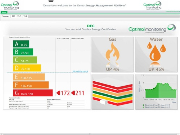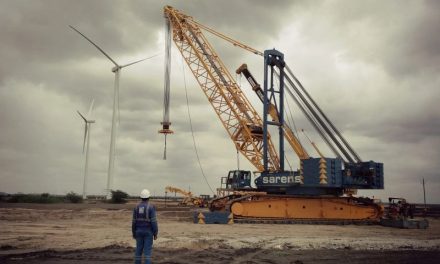 Duncan Everett, managing director at Optimal Monitoring, has set out his wish list for the coalition’s new energy minister, John Hayes.
Duncan Everett, managing director at Optimal Monitoring, has set out his wish list for the coalition’s new energy minister, John Hayes.
Now that the cabinet reshuffle has taken place and parliament is setting out its latest agenda, we, on behalf of businesses and building landlords around the UK, would urge you to bring new decisiveness to expectations, regulations and standards around energy efficiency and carbon reduction.
It is all very well setting ambitious targets, but the UK is destined to become a laughing stock because the measures taken so far have been too vague and too non-committal, draining companies’ enthusiasm for pressing on with aggressive changes to the way they plan and manage buildings and generally consume resources.
The need for greater consequences Complaints are rife among large businesses which invested early in environmental sustainability initiatives, but which soon learnt that these efforts were not being adequately recognised. Repeated changes to the rules, a lack of transparency and an absence of penalties for those organisations lagging in their actions has diminished broader belief in any commitment to the cause. This in-turn is undermining the credibility of UK government programmes and our national standing against EU and global targets.
How much attention, if any, is being paid to the new carbon efficiency performance league table, for example, which ranks companies according to their compliance with the Carbon Reduction Commitment (CRC) Energy Efficiency Scheme? Where there are any strong feelings about it, the main concern is that the measures are inadequate and the rankings misleading – hardly the aim of the legislation.
Stop watering down targets Then there have been promises to relax some targets to stimulate market growth – for example to make property construction more affordable in the light of continued economic hardship. Earlier this year, the government announced new plans to limit carbon reduction targets on new homes to eight percent on 2010 levels and 20% for non-domestic buildings, compared with the original target of 25%.
Yet the UK’s carbon reduction targets have already been set and agreed to, and future generations are not going to be very forgiving if global warming continues to accelerate because the UK hasn’t managed its economy as well as it had hoped.
We would urge the government to bring new decisiveness to the situation, and make firmer plans to ensure Britain meets its EU commitments on carbon reduction. As things stand, we are falling ever further behind against our targets and will soon be unable to make up the lost ground. The speculation that the new environment secretary, Owen Paterson, is a ‘climate change’ sceptic, hardly helps matters.
Legally, the UK now has a national requirement to reduce carbon emissions by 80% (compared to the level in 1990) by 2050, and interim targets are looming large. In London, mayor Boris Johnson has confirmed tough carbon reduction targets for the built environment in the new London Plan. This includes a 60% reduction in carbon dioxide levels by 2025, positioning the city as a ‘world leader’ in developing a low carbon economy. These bold statements echo the central government’s pledges – now there just needs to be some urgent and committed follow through.
From as soon as 2016, all new homes in Britain will be expected to meet ‘zero carbon’ standards, with all non-domestic buildings following from 2019. Existing building stock will also require significant adaptation and renewal. The dates given are for meeting targets, not for beginning implementation, yet there seems to be an astonishing lack of urgency about the situation.
We should ask too whether these targets will be enough to bring the UK in line with its broader pledges on climate change. The Committee on Climate Change (CCC) has now claimed that the pace of emissions reduction in the UK will need to increase fourfold to meet Chris Huhne’s pledge to the global community (the most ambitious targets on greenhouse gases of any developed country). These involve halving carbon dioxide emissions by 2025. While greenhouse gas emissions reduced by seven percent last year, only 0.8% of this was down to the government’s proactive carbon lowering measures, the CCC notes.
Backing the innovators So what is to be done? Focusing on reporting alone or expecting utility providers to provide all the answers is not enough. Energy companies are all too wrapped up in supply legislation and are rarely in any position to be creative. More needs to be done then to promote the role of emerging, specialist businesses focused on actually driving down consumption and carbon in real terms – and are actually getting results. Businesses which should be a great British export, in an emerging, worldwide market bringing much needed money into the great British coffers, but yet are currently constrained by their own government’s legislation.
We are at a point where innovation is the only way we are going to get out of the current mess the UK finds itself in. Setting out legislation that panders to the energy companies – who have enough to do reducing carbon emissions in the supply chain – would be a disaster.
We hope that the government will take now more assertive action, provide much greater clarity about how new carbon reduction (CRC) requirements will be measured and managed and consider how it will drive through the magnitude of improvements it has promised. Although tenants pay the price for poor energy management in the buildings they occupy, for example, they have limited control over the way these are equipped. Until now landlords have been largely unwilling to invest in efficiency changes because they haven’t felt they would reap the benefits (or, more to the point, be penalised for a lack of remedial action). Turning this situation around is likely to require extreme measures, such as a ban on letting energy inefficient properties, and there are hopes now that we will see this kind of measure being taken, if only to set a much needed precedent.
Money talks Procrastination and political wrangling is detracting from other important factors associated with CRC targets too, namely that more frugal use of resources means easy cost savings – for all parties. There is plenty of evidence to show that even very simple changes in individuals’ behaviour, resulting from better insight into the impact of their everyday habits, can bring the average building’s energy bill down by 10-20% in a very short space of time. But is enough being done to create the required ‘shock’ factor?
Clear information is the most important tool here – and appealing to business purses in the current climate means driving home just how much money is being haemorrhaged through poor carbon management, and the direct consequences that will be imposed if those responsible don’t get their houses in order.
Improved energy efficiency is one of the easiest all-round win-wins, and it starts with information – not massive capital investment. Once people have a means of monitoring their energy consumption and can see what they’re wasting needlessly, that’s often the only wake-up call they need.
We understand the conflicting demands between delivering carbon efficiency yet also stimulating economic growth. Our argument is that one needn’t preclude the other. Energy efficiency, through closer monitoring and reporting of existing consumption, enables direct savings – releasing cash that can be invested elsewhere. And there’s nothing like some cold hard figures highlighting real wastage to shock even the most apathetic landlords, businesses and consumers into more urgent action.
The first deadlines are almost upon us now, so there is no time to lose. As the energy department draws up its priority list for the months ahead, we look forward to seeing renewed zeal for the cause, clear mandates, backing for those with innovative, constructive solutions and stiff penalties for non-compliance, so that no one has an excuse not to fall into line.





